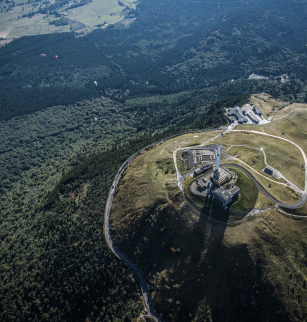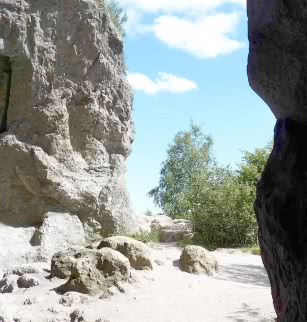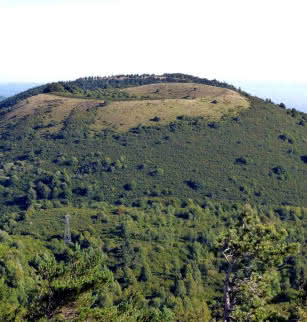Christianized Menhir

The area features several megaliths dating back to the end of the Neolithic, including the Villars menhir Christianized in the 16th century.
The appearance of megaliths in the metropolitan area of Clermont Auvergne dates back to the late Neolithic age. All the menhirs are made from granite and the stone used often comes from the Ceyrat gorges. These blocks, weighing several tonnes, were carried from the point of extraction to the place where they would be laid. These monuments seem to mark a territory, a limit or a passage. They are always placed in a visible location.
The Orcines menhir, in the village of Villars, is a block of coarse-grained porphyritic granite from the Puy de Dôme. It was christianized in the 16th century by the addition of a basaltic cross on its top. It features a sculpture of Christ on each side. The monument is 1.8 m high from the ground. This menhir appears to have remained in its initial location despite gradual urban development.
The metropolitan area has conserved three other known examples of megaliths: the Pont d’Aubière menhir known as La Pierre Piquée in Aubière (listed on the historic monuments registry in 1971), the Beaulieu, Sainte-Anne and Pierre Longue menhirs, La Grande Borne, in Clermont-Ferrand (listed on the historic monuments registry in 1924) and the La Sarre menhir in Clermont-Ferrand (listed on the historic monuments registry in 1965). During works to widen highway A75 at Le Douleix in the municipality of Veyre-Monton, archaeological excavations in 2018 revealed alignments of menhirs that were unique in Auvergne.
Prices
- Free access.







